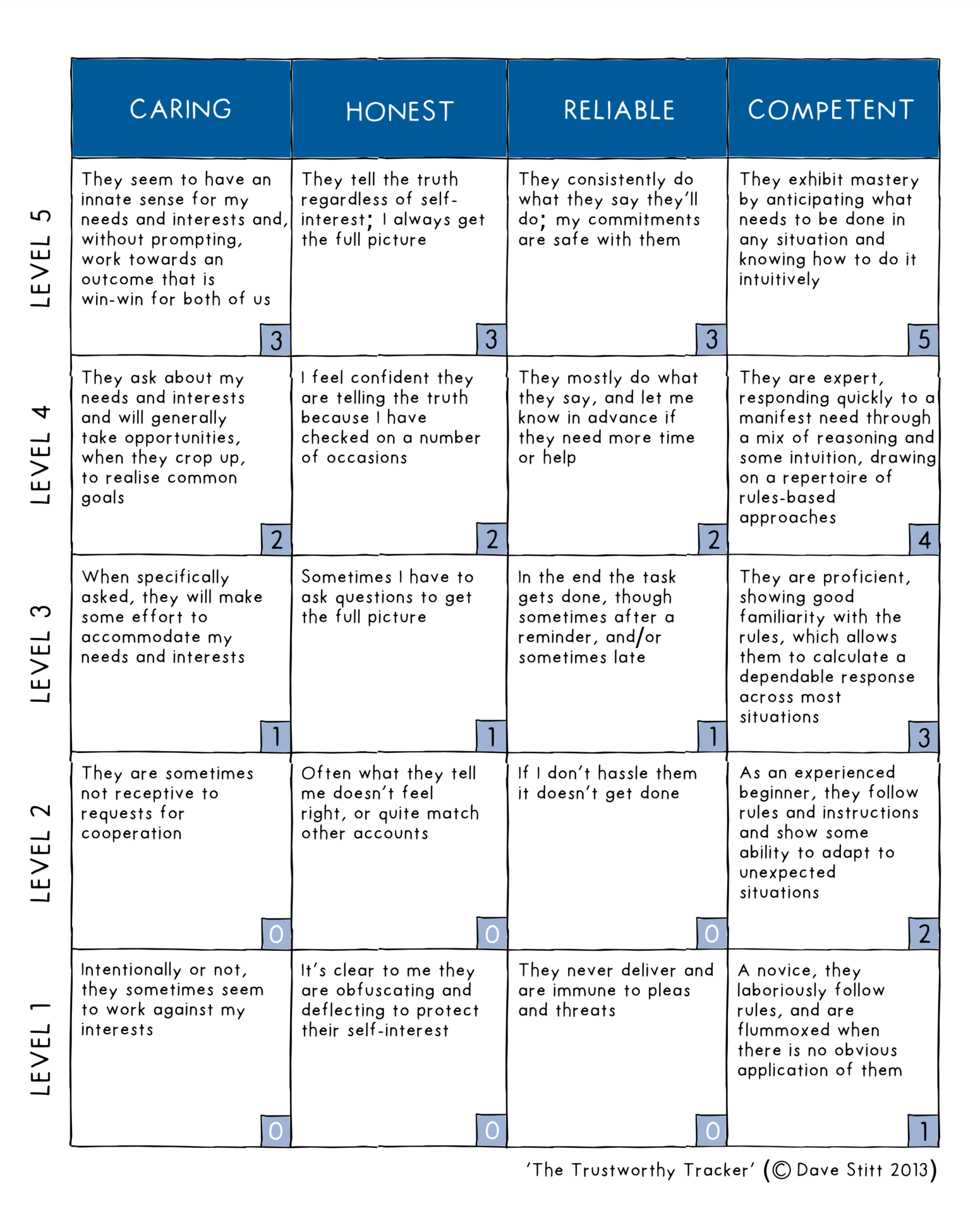Construction coach Dave Stitt explains how to develop more trust among project teams

“There’s not enough trust around here! We need more of it!”
We hear this all the time, and it always strikes me as kind of an empty thing to say, because a general exhortation to “have more trust” is unlikely to make anyone more trusting.
The philosopher Baroness Onora O’Neill nailed it in her 2013 TED talk, calling it a “stupid aim”. Instead, she says, “I would aim to have more trust in the trustworthy but not in the untrustworthy.”
Sounds sensible, but how do you know if someone is worthy of your trust?
Inspired by O’Neill’s talk, I developed a tool for assessing that, called the Trustworthy Tracker™.

I used elements that she identifies – honesty, reliability and competence – and added a fourth, “caring”, as a way of gauging how willing a person is to help, and how committed to quality they are. As Robert M. Pirsig writes in his excellent book, Zen and The Art of Motorcycle Maintenance: “Care and Quality are internal and external aspects of the same thing.”
Each element has five levels ranging from not trustworthy at the bottom to very trustworthy at the top. For each element, you pick the statement that best describes the person in relation to the thing you’re considering entrusting them with, then multiply the four scores together to arrive at the overall trustworthiness score. Possible scores range from zero to 135.
It’s a tough test. A zero score is easy to get and, among hundreds of people in my coaching sessions to have used it since its creation, none to my knowledge has given a 135.
Us and them
I’ve used the Tracker as a development tool for project teams, where trust between the contractor’s side and the client’s side is typically low. Here’s how that works.
Getting the team’s leadership together, I ask each person to assess a key project function carried out by the other side, such as design, quantity surveying and contract administration on the client’s side, and commercial management, quality assurance and project management on the contractor’s.
Each person thinks of one of these functions performed by the other side and scores it without identifying the function or the person or people behind it. I collect the scores and calculate each side’s average, assigning one average score to the client and one to the contractor. Up they go on the white board. Names of people and specific functions are not given because we don’t want the discussion to descend into a personal slanging match.
On the first go, each side’s overall score is usually low, such as in single digits or low teens. It’s interesting to watch everyone’s reaction to their side’s score, up there in black and white. There are usually a few rueful chuckles.
Offers of help
But the stage is set for a useful discussion. Next, I ask what one thing each side might agree to do, for its part, right here and now, to bump their score up a notch on just one element. That leads to a discussion about what each team needs in the project and what’s important for them, which opens the door to offers of help from the other side.
The client’s side might commit to getting its project manager’s instructions written up and filed faster so the contractor can log extra work in its valuations and feel confident it will get paid for extra work. The contractor might commit to having its inspection and test sheets signed off faster, so the client can be more confident about quality day by day.
That’s a good result. We haven’t waved a magic wand over the project to magically instill trust where none existed before, but each side of the team has discovered a way of talking about what matters to them and working on its own trustworthiness, which is the best way to build trust.
One team delivering a major project for a local authority in England found it so useful that they began using it in their weekly meetings. By doing practical things to increase their trustworthiness in relation to the project, each side’s overall score rose steadily and the atmosphere was transformed.
The Trustworthy Tracker™ is also useful in delegating important tasks, which I hope to discuss next time. Meanwhile, you can download the Tracker for free here.
A chartered engineer and professional certified coach, Dave Stitt MCIOB coaches construction company boards and project teams, and is the author of Deep and Deliberate Delegation and Coach for Results, each available on Amazon.









